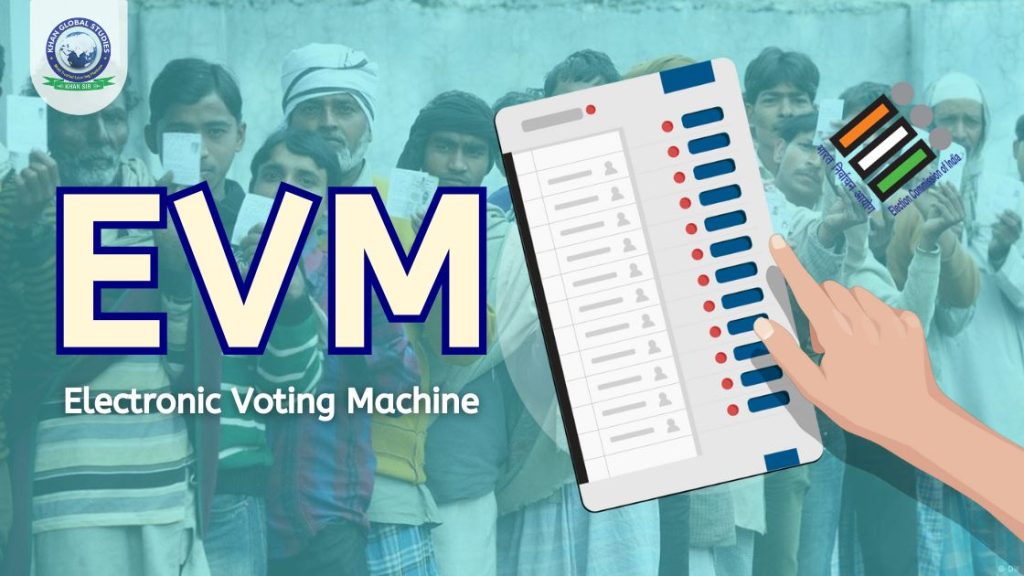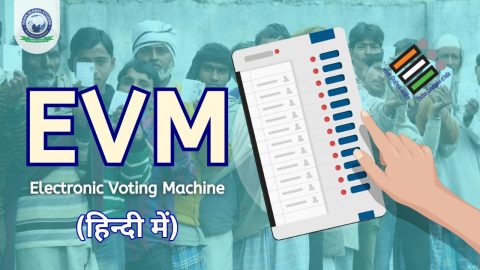In the technologically growing world, the traditional methods of voting in elections have changed and Electronic Voting Machine (EVM) is one of them. EVMs have improved the way we cast our votes with their attractive designs and state-of-the-art capabilities. Even in India, elections are conducted using EVMs.
EVM has been used in Indian general and state elections since the 1999 elections, partly due to the implementation of electronic voting. Even before this, claims were made regarding the reliability and security of EVMs which have not been proved. Following the judgments of the Delhi High Court, the Supreme Court and demands from various political parties, the Election Commission decided to implement EVMs with the Voter Verified Paper Audit Trail (VVPAT) system.
About EVM
An electronic voting machine is a device used to conduct electronic voting in elections. It is said to be a special electronic device designed to record votes accurately and securely. EVMs are used to replace traditional paper ballot systems in many countries worldwide.
An EVM usually consists of a control unit and a voting unit. An election officer operates the control unit and manages the voting process, while voters use the polling unit to cast their votes. EVMs are operated through buttons or symbols representing different candidates or political parties. Voters press a button of their choice and their vote is recorded electronically.
Manufacturers of electronic voting machines, Electronics Corporation of India Limited, Hyderabad and Bharat Electronics Limited, Bengaluru, have stated that the EVMs are completely reliable as the programming for the EVMs is done in a secure manufacturing facility at ECIL and BEL (where the operations take place) Is maintained (electronically maintained) and not with the chip manufacturers. EVMs and Voter Verified Paper Audit Trail contain an anti-tamper mechanism in the control and ballot units that renders them inoperative if opened illegally. EVMs are standalone machines, have no radio frequency transmission device, operate on battery packs and cannot be reprogrammed. The control unit of the EVM has a real-time clock that records every event at the exact moment it was switched on. The anti-tamper mechanism in the machine can detect even 100-millisecond variations.
Types of EVM
There are three types of electronic voting machines M1, M2 and M3. The most modern M3 EVMs, in use since their introduction in 2013, allow machine code to be written into the chips at the PSU premises – Bharat Electronics Limited, Bangalore and Electronics Corporation of India Limited, Hyderabad. The Election Commission of India introduced EVM Tracking Software (ETS) as a modern inventory management system where the identity and physical presence of all EVMS/Voter Verifiable Paper Audit trials (VVPAT) are tracked on a real-time basis. M3 EVMs have a digital verification system coded into each machine that is required to establish contact between its two component units. It has multiple layers of seals to ensure it is tamper-proof. Indian EVMs are non-networked machines.
When was EVM used for the first time in Lok Sabha elections?
Electronic voting machines are a mainstay of the electoral process. It was first conceived in 1977 at the Election Commission and Electronics Corporation of India Limited (ECIL), Hyderabad was entrusted with the task of designing and developing it.
A prototype was developed in 1979 which was demonstrated by the Election Commission to representatives of political parties on 6 August 1980. Bharat Electronics Limited (BEL), Bangalore was included in this.
EVMs were first used in the Kerala general election in May 1982, although the Supreme Court voided that election due to the absence of any specific law stipulating its use. Subsequently, in 1989, Parliament amended the Representation of the People Act 1951 to provide for the use of EVMs in elections.
Consensus on their introduction was reached only in 1998 and they were used in 25 assembly constituencies of three states, Madhya Pradesh, Rajasthan and Delhi. Its use was extended to 45 parliamentary constituencies in 1999 and later to 45 assembly constituencies in the Haryana Assembly elections in February 2000.
EVMs were used in the assembly elections held in the states of Tamil Nadu, Kerala, Puducherry and West Bengal in May 2001. In the 2004 Lok Sabha general election, EVMs (over 10 lakh) were used in all 543 parliamentary constituencies in the country.
How are EVMs different from Paper Ballots?
EVMs offer advantages over paper ballots in terms of speed, accuracy and reduction in invalid votes. EVMs eliminate the need for manual counting of paper ballots and provide faster election results by reducing human errors.





